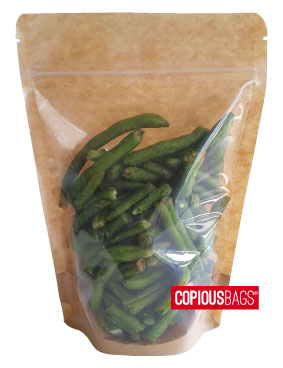Calendula officinalis Marigold Flowers in Carton Shipped in 20″ FCL Container
Login to view prices
Bright yellow and orange flowers, historically used for medicinal and culinary purposes, come from easy calendula care when growing this simple flower. Commonly called the pot marigold (Calendula officinalis) . Petals are used in cooking, and were used as yellow coloring in cheeses and butters in centuries past. When used in stews, broths and salads, these petals add a spicy taste similar to saffron to many dishes. All parts of calendula plants are useful in many ways. The plant is said to stimulate the immune system and is currently used as an ingredient in many cosmetics. Flowers and leaves of the calendula may be dried and stored for later use. In the vegetable garden, calendula draws aphids away from valuable plants. While uses of calendula plants are diverse, growing calendula in the flower or herb garden is an optimum use of this attractive plant. aa
Calendula was not a major medicinal herb but it was used in historic times for headaches, red eye, fever and toothaches. As late as the 17th century Nicholas Culpeper claimed calendula benefited the heart, but it wasn’t considered an especially efficacious medicine.
Romans and Greeks used the golden calendula in many rituals and ceremonies, sometimes wearing crowns or garlands made from the flowers. One of its nicknames is “Mary’s Gold,” referring to the flowers’ use in early Catholic events in some countries. Calendula flowers are sacred flowers in India and have been used to decorate the statues of Hindu deities since early times.
However, the most common use in historic times was culinary, and the plant was used for both its color and its flavor. They were used for dumplings, wine, oatmeal and puddings. In English cuisine calendula were often cooked in the same pot with spinach, or used to flavor stewed birds. According to sixteenth-century Englishman John Gerard, every proper soup of Dutch cuisine in his era would include calendula petals.
Culinary
The petals are edible and can be used fresh in salads or dried and used to color cheese or as a substitute for saffron. It can be used to add color to soups, stews, poultry dishes, custards and liquors.
Dyes
Dye can be extracted from the flower and produce shades of honey, gold oranges, light browns, and vibrant yellows.
Chemistry
The flowers of C. officinalis contain flavonol glycosides, triterpene oligoglycosides, oleanane-type triterpene glycosides, saponins, and a sesquiterpene glucoside.
Pharmacological effects
Calendula oil is still used medicinally. The oil of C. officinalis is used as an anti-inflammatory and a remedy for healing wounds.[12] Calendula ointments are skin products available for use on minor cuts, burns, and skin irritation;[13] however, evidence of their effectiveness is weak.[13][14]
Plant pharmacological studies have suggested that Calendula extracts have antiviral, antigenotoxic, and anti-inflammatory properties in vitro.In herbalism, Calendula in suspension or in tincture is used topically for treating acne, reducing inflammation, controlling bleeding, and soothing irritated tissue. Limited evidence indicates Calendula cream or ointment is effective in treating radiation dermatitis.[18][19] Topical application of C. officinalis ointment has helped to prevent dermatitis and pain; thus reducing the incidence rate of skipped radiation treatments in randomized trials.
Calendula has been used traditionally for abdominal cramps and constipation. In experiments with rabbit jejunum, the aqueous-ethanol extract of C. officinalis flowers was shown to have both spasmolytic and spasmogenic effects, thus providing a scientific rationale for this traditional use. An aqueous extract of C. officinalis obtained by a novel extraction method has demonstrated antitumor (cytotoxic) activity and immunomodulatory properties (lymphocyte activation) in vitro, as well as antitumor activity in mice
Overview about Calendula oil
Calendula infused oil has antifungal, anti-inflammatory, and antibacterial properties that might make it useful in healing wounds, soothing eczema, and relieving diaper rash. It’s also used as an antiseptic. Calendula oil is made by infusing marigold flowers in a carrier oil. This oil can be used on its own or to make ointments, creams, or salves. Calendula can also be processed into a tincture, tea, and capsules.
Calendula oil benefits for skin
Calendula oil may be an alternative remedy to treat various skin conditions as well as improve the quality and appearance of the skin. Here are seven ways calendula oil may be used for the skin.
Calendula cream as sunscreen
Calendula oil might be an option for sun protection. A 2012 laboratory study found that calendula oil had SPF properties as a cream mixture. However, more evidence is needed to support calendula cream as a possible sunscreen.
In the meantime, stick to a sunscreen proven to work to reduce the chances of skin cancer for you and your family.
Find sunscreens infused with calendula extract online.
Calendula oil for wounds
Calendula oil might accelerate wound healing. Research from 2013Trusted Source suggests that using aloe vera or calendula ointment along with standard care sped up episiotomy recovery time.
In the study, women who used either aloe vera or calendula ointment every eight hours for five days showed improvement in symptoms such as redness, swelling, and bruising. Adding aloe or calendula ointment to standard care was found to be more effective than using standard care alone.
Calendula oil for acne
Some people use calendula oil to treat acne. One laboratory study found that calendula extract may be useful in treating and preventing acne vulgaris, but more research, especially studies on humans, is needed to support these findings.
You can try washing your face using a calendula cleanser. You can apply calendula cream, oil, or spot treatment to your whole face or use it to target acne-prone areas. You may even wish to try a face mask treatment once per week.
Calendula oil for eczema
Although there’s no research to support it, some people use calendula oil to treat eczema. However, one study found it can help relieve pain from dermatitis in people receiving radiation for breast cancer.
Here are eight natural remedies to reduce eczema symptoms.
Calendula oil for diaper rash
Calendula oil might help soothe diaper rash. A small study in 2012 found that while an aloe vera cream was effective in treating diaper rash, a calendula ointment was significantly more beneficial. However, this research is preliminary.
To relieve diaper rash, you can try applying a small amount of calendula oil on its own or mixed with aloe vera on the affected area a few times per day.
For more options, read our roundup of the 11 best diaper rash creams.
Calendula oil for psoriasis
Calendula oil’s wound-healing properties might make it a good choice in treating psoriasis, but there isn’t any research on this yet. You can try applying calendula oil or balm on the affected area a few times each day.
Calendula oil for better skin
Calendula oil might improve the overall appearance of your skin. One study found that a cream containing calendula extract may promote skin hydration and firmness, but more research is needed.
It’s also speculated that calendula might help treat contact dermatitis, which includes reactions to poison ivy.
You can try applying a calendula oil or cream on your skin twice per day.
Export Markets:
We export our products to many countries all over the world. USA, France, Germany, China, Malaysia, Algeria, Morocco, Indonesia…etc
Quotation:
- Incoterms: FOB
- Quantity: one 20″ FCL Container Minimum
- Specification: 100% natural and Pure quality
- Documentation: COA, MSDS, TDS, GC Peaks
- Packaging: Bulk Packaging
- Payment terms: TT in advance to Our bank account
- Lead time: Shipping through 10 days from receipt of the payment.
- Sea Shipping Time: 35 days
- Air shipping time: 10 days
Quality Certificates:
- ISO 9001-2015
- ISO 22000-2005
- GMP accredited by AQC Middle East FZE
- KOSHER Certificate
- Halal Certificate
- ORGANIC Certificate accredited by CERES GmbH Germany
- NOP Certificate accredited by CERES GmbH Germany
- Egyptian Ministry of Health Permission
Contact us please to receive other supporting documents for our Oils :
- COA
- MSDS
- TDS
Branding Services
We also can do customized packaging for you to pack whatever size you like. We can help in designing labels, selecting good packets or bags. We deliver integrated solutions under your brand..
Organically Certified product Available upon request
Additional information
| Weight | 12000 kg |
|---|---|
| Dimensions | 610 × 244 × 259 cm |
| Herbs & Spices Purity | 98% |
| Country of Origin | Egypt |
| Ship from | Egypt |
| Physical Form | Entire Flowers, Petals, Powder |
| 20 Container Capacity H | 3500 kg, 5000 kg, 8000 kg |
| Herbs Packaging | Carton 10 Kg |
| Cultivation Type | Organic, Conventional |
| HS Code | 09109990 |
| Custom Branding & Packaging | Yes, OEM Custom banding, designing and packaging are available for that product |
| Herbal OEM Packaging | Kraft Bag, Kraft Bag with transparent window, Kraft bag with open side, Glass Jar, Glass jar Spices with holed lid, Tea bag, Tea bag with paper bag, Tea Cylinder packaging, Tin Packaging |
| Documentation & Certifications | Allergen Free Certificate, Bovine Spongiform Encephalophathy (BSE) Certificate, GMO Certificate, GRAS Status Statement, Herbal Origin Statement, Organic Certificate, Pesticide Residual Certificate, Halal Certificate, KOSHER Certificate, Researches & Studies, Certificate of Analysis (COA), Technical Data Sheet (TDS) |
-
Login to view prices
-
Login to view prices
-
Login to view prices
-
Login to view prices











